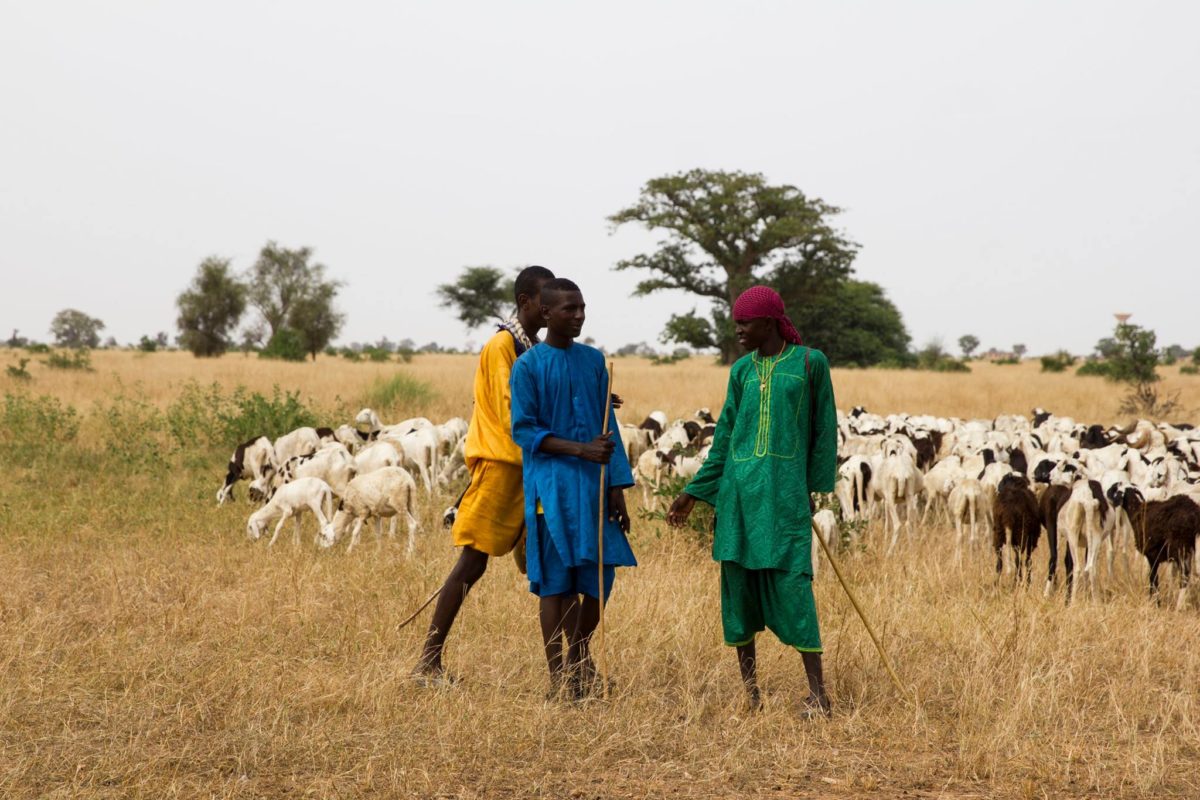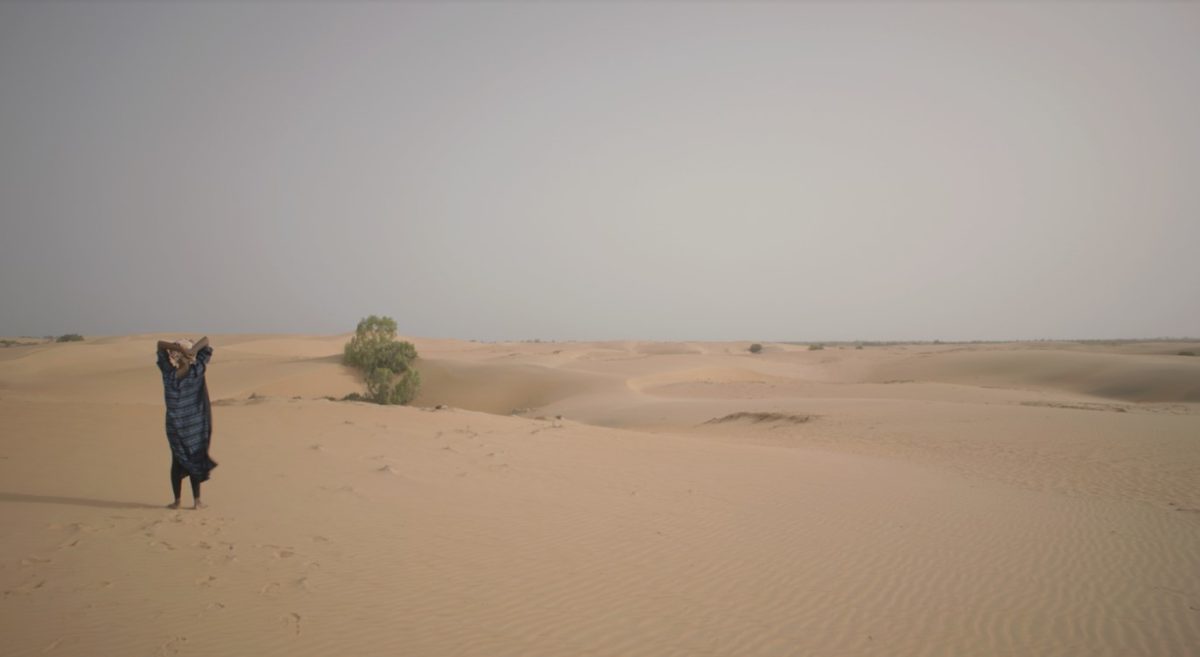Africa’s Great Green Wall, a climate crisis initiative that offers hope for some of the continent’s most beleaguered farmers, is back on a steady trajectory after securing $14 billion in new funding for the next decade.
Once complete, Africa’s Great Green Wall will reportedly be the largest living structure on the planet, covering an area 8,000 km long by 17 km wide — three times the size of the Great Barrier Reef — and stretching across the entire continent.
With the fresh infusion of funds — obtained at the Paris-One Planet Summit for Biodiversity — it is anticipated that hard-pressed pastoral and agricultural communities long challenged by poverty and persistent food insecurity in the Sahel and Horn of Africa regions will enjoy better lives.
Diarra Fatoumata, a 38-year-old mother of four, is from one of those farming communities — Koremairwa village in the Doutchi district of southwestern Niger. She is one of many smallholder farmers who recently received improved millet and maize seeds, courtesy of the initiative.
“My farming prospects have gotten better on account of using improved grain seeds,” she said. “Previously, some of the seeds I used to plant would germinate but the crops would wither and die off. With the new seeds, I am now able to produce and harvest sturdier crops, which have a better market value. Together with other smallholder farmers from my village and other areas of the Sahel, we have also attained training on appropriate crop rotation and how to use small-scale irrigation for crop production and for extending farming activities into the dry season.”
For good measure, a number of smallholder farmers in Sudan, Eritrea, Ethiopia and Djibouti were also trained in proper agroforestry, water harvesting and irrigation practices and on how to create shelterbelts for their farmlands.
“Shelterbelts are now helping many farmers in controlling soil erosion in Sudan,” said Abdel Aldai, a wheat and maize farmer in Karima, Sudan. “With agroforestry, we were taught how to integrate trees, which are helpful in climate change mitigation, into our farming activities, with an aim of achieving better productivity by tapping into the ecosystem amenities supplied by trees.”

Agricultural and environment policy analysts reckon that the additional funding vouchsafed by the French government, African Development Bank, World Bank, European Commission and other sources will breathe new life into the initiative, which just has under a decade to achieve its goals of creating 10 million green jobs, sequestering 250 million tonnes of carbon, restoring 100 million hectares of degraded land and protecting Africa’s biodiversity, while reducing poverty and food insecurity.
Its mediocre progress to date was highlighted in a United Nations status report, Great Green Wall: Implementation Status and Way Ahead to 2030, released last year. It found that the though the initiative was more than halfway to its 2030 completion date, it had only covered 4 percent of its target area.
The findings did make for good reading in some African ecological and environmental research think tank circles.
“For some, it was an indictment on the people in charge of the initiative,” said Faustin Banjoko, a climate action and development policy expert. “It also lent credence to schools of thought that held zero net degradation and dryland tree planting [afforestation] in the 7 million square kilometers Sahel region would face long odds, as had been the case with the North African Green Dam project.”
By all accounts, however, the initiative’s execution shortfalls were due to deficiencies in funding and technical support.Now those obstacles seem to be out of the way.

Godfrey Oluka, an environment specialist at the United Nations Development Program, said the new funding — in a year, that marks the beginning of the UN’s Decade for Ecosystem Restoration — may just be the silver lining the initiative needed.
“It is a welcome development. It will hopefully draw forth a renewed urgency in executing the initiative’s targets, to wit, the restoration of degraded land in the Sahel, a region that experiences a 3 percent decline in agricultural production, per year, due to land degradation and which has in the last 30 years been devastated by severe drought and massive loss of fertile land, due to climate change and over-farming, and the enhancement of agricultural production systems in the rest of the Great Green Wall [GGW] intervention zones, represented by Ethiopia, Eritrea, Mauritania and Djibouti,” Oluka said.
Banjoko added: “On the face of it, there is a lot of progress being made in the GGW nations especially in the areas of promoting agroforestry, improving livestock breeding, providing green jobs, creating shelter belts for farmlands, improving irrigation efficiency for agricultural production, strengthening climate resilience and boosting pastoral and agro-pastoral regenerative agricultural production. These will, in the course of time, all translate into better incomes and a better food security status quo.”
Because crop production in the Sahel is for the most part rainfed with limited irrigated agriculture, several smallholding traditional agriculture farmers in countries like Niger, Burkina Faso and Mali have been getting apprenticeships on the improved use of sprinkle and drip surface irrigation techniques and on proper rainwater harvesting practices.
There was further good news for farmers when the Green Climate Fund and the International Fund for Agricultural Development recently announced that they had a pipeline investment project called the Great Green Wall Umbrella Program (GGW Up). It would ostensibly boost climate finance for the GGW nation’s rural populations and would ensure that small-scale farmers and agribusinesses have better access to markets and strengthened value chains, creating economic opportunities and jobs, through the development of climate-resilient infrastructure and expanding the use of solar energy.
Speaking at the One Planet Summit, Susan Gardner, director of the UN’s Environment Program’s Ecosystems Division, said the initiative was an inspiring example of ecosystem restoration in action. “This initiative alone will not transform the Sahel’s fortunes overnight but will rapidly become a green growth corridor that will bring investment, boost food security, create jobs and sow the seeds of peace.”
In recent years, however, there have been growing concerns that the ongoing conflict in central Sahel would slow down progress, particularly in Mali, Burkina Faso and Niger.
There are already grim realities on the ground with statistics from the International Organization for Migration’s Displacement Tracking Matrix indicating that over 1.5 million people have been internally displaced by the ongoing crises in the three nations.
Notwithstanding that, there are pointers to strides being made.
During a recent International Forest Day Forward Thinkers Webinar, Louise Baker, managing director of the UN Convention to Combat Desertification Global Mechanism, said about 20 percent of the project’s target area has now been completed.
“All partners are working assiduously towards the initiative’s 2030 targets,” she said. “Eighteen million hectares of the proposed 100 million land hectares have been restored, 350,000 green jobs out of the proposed 10 million have been created and about US$90 million generated by communities in the initiative’s intervention zone.”
On the green economy front, the anticipation is that by the initiative’s completion point, 8,000 kilometers of the intervention zone’s land area will be covered with a mosaic of trees and plants. Thus far, more than 5 million hectares of degraded land have been restored in Niger and 12 million trees planted in Senegal. Some 15 million land hectares have been restored in Ethiopia; 29,602 hectares in Burkina Faso; 52,930 hectares in Eritrea, and 120 hectares of land in Mali, among other places.
According to the UN report, land restoration in the project intervention zones positively impacted 15 of its 17 Sustainable Development Goals (SDGs). By all accounts, the US$90 million generated helped to reduce rural poverty in the intervention zones.
Baker is upbeat about the initiative’s prospects.
“This initiative will not come up short like previous tree planting ecological projects on the continent. The difference is that it is owned and implemented by communities and countries themselves,” she said. “Each country has designated a protected area dedicated to activities along the Great Green Wall, managed by their local communities. A unique practice known as rainwater harvesting which collects the heavy annual rainfall and distributes it through irrigation systems, is one of the ways in which the Great Green Wall is sustained. Sustainability of this program is already being owned by the communities.”
